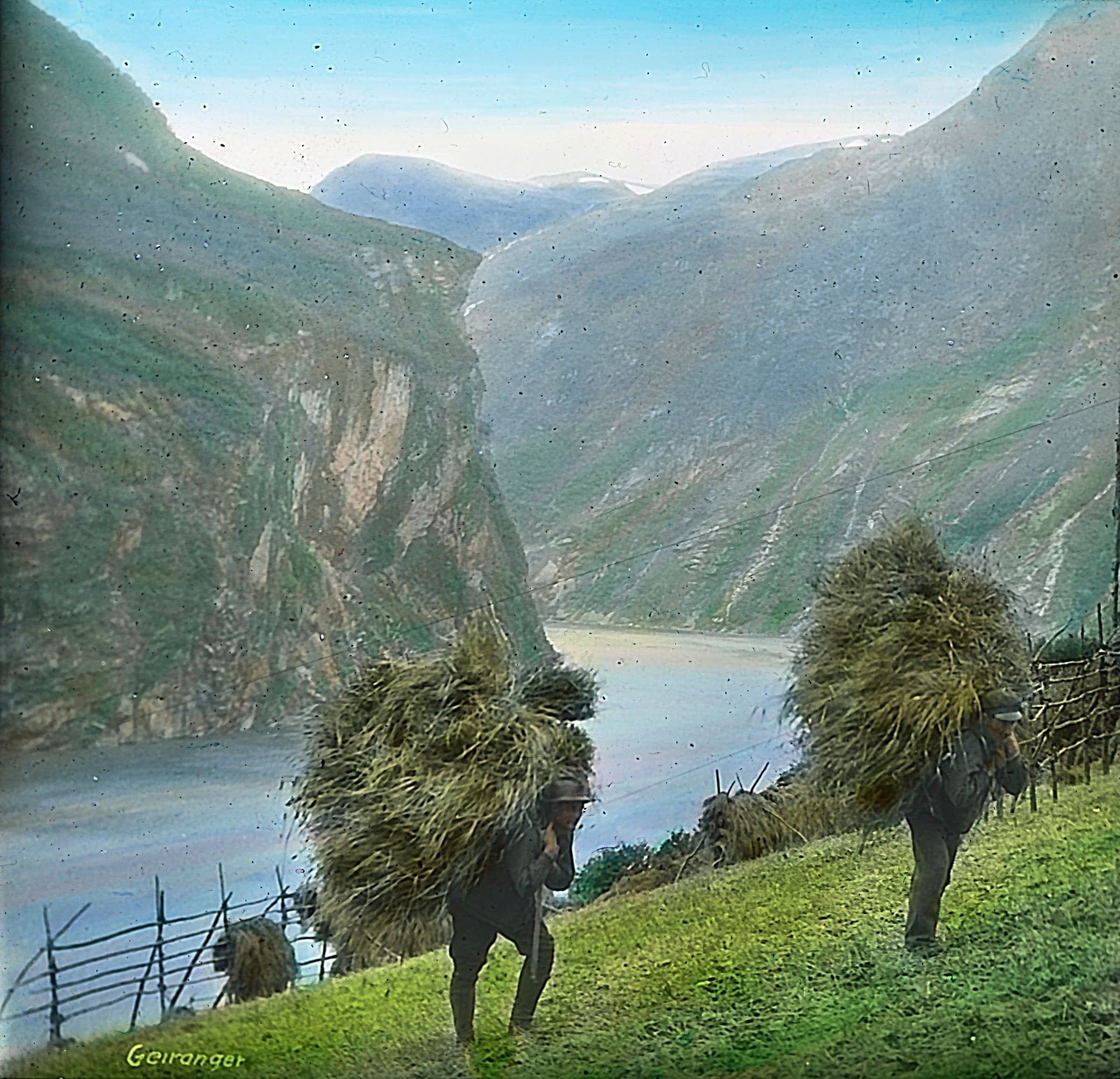Using sound as a tool
Since time immemorial, humankind has used sound to:
- signal danger,
- pass on a message,
- call people and farm animals back home,
- scare off enemies and wild animals,
- express emotion,
- and for ritual communication with the great unknown.
As humankind developed as a species, so did the use of sound and sound-tools.
Let us take a closer look at one such tool: the ancient birch trumpet. Or as the Norwegians call it: the lur. In English, the instrument is also sometimes referred to as a shepherd’s horn.
What is a lur?
Simply put, the lur is a hollowed-out piece of wood, designed to create a loud sound. It is narrow at one end and wider at the other.
By blowing air into the narrow end – at the same time as shaping and vibrating one’s lips – sound is created and further enhanced on its journey through the hollow wood-pipe.
The sound is similar to that of a trumpet – hence the nickname – and can be heard over long distances.
The longer the lur, the more tones it can create. The tones are solely generated by the shape of the player’s lips, and the pressure of the airflow coming from her lungs.
A long and a short version
Historically, there have been both a long and a short version of the lur.
The short version – also called a stuttlur – is a whole and hollowed-out piece of wood.
The long version is made from a young tree trunk or a branch – that is split into two halves – then hollowed out – and lastly put back together again. The outer surface is often clad with birch bark.
Scaring wild animals away
In Norwegian folklore and historical storytelling, the lur is strongly associated with the lonely existence of the summer dairy milkmaid, and the young herder girl or boy who accompanied her.
Every summer, the milkmaid and the herder took the animals out into the woods or up into the mountains – and lived there alone in simple seasonal abodes until the autumn.
Living alone with the farm animals could be dangerous in areas with aggressive predators – like wolves and bears.
Usually, the summer dairy milkmaid did not have a shotgun. Instead, she used noise to scare unwanted intruders away; and the lur was one of her weapons of sound.
The milkmaid communicated with other nearby milkmaids by blowing the horn, and – depending on distance and topography – also with the people back home at the main farm.
She also sometimes sounded the lur to call the herder and the farm animals back for milking in the late afternoon.
Maybe it was during her limited spare time in the evenings that she started creating simple tunes with this crude instrument; expressing loneliness and longing; turning the lur into something more than just a practical tool.
The meaning of the word
The word lur comes from the old Norse lúðr and simply means a hollowed-out tree trunk or branch.
When hearing the word lur, most modern-day Norwegians think of a foghorn – a tåkelur. Today, the sound guiding the seafarers lost in the fog comes from automated machines. But once upon a time – a man or a woman blew the horn – like a human beacon of sound – helping the sailors to find their way to safety.
Bronze-Age trumpets
In 1894, Norwegian archaeologists found 2 bronze trumpets outside the city of Stavanger, dating back some 3000 years.
The wooden version of the lur is believed to predate these metal instruments by millennia.
Is the birch trumpet still in use?
Today, only enthusiasts and folk music groups play the instrument, keeping the traditions and the old tunes alive. Sadly, the milkmaids and the young herders are long since gone.
On the internet, you will find video-examples containing the birch trumpet’s sound.
The lur is an ancient link back to our distant ancestors. And if you close your eyes and listen carefully, then you may hear them playing – and hear their laughter and see the smile on their faces too.
Source: Sevåg, Reidar. Det gjallar og det læt. Det Norske Samlaget 1973. | EGP.00042











